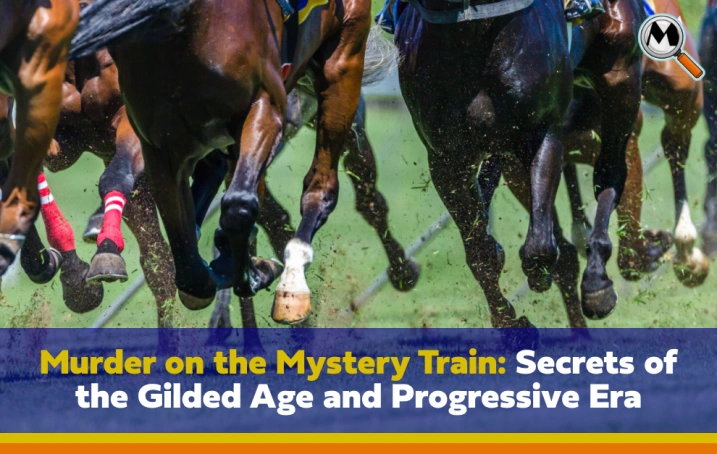As we embark on a captivating journey back to the early 1900s, we find ourselves caught between the opulence of the Gilded Age and the transformative currents of the Progressive Era. This pivotal period was marked by stark wealth disparity and simmering social tensions, laying the intricate groundwork for our newest show on the Murder Mystery Dinner Train. Here, echoes of real-life scandals seamlessly intertwine with the lives of its characters, creating a tapestry of mystery and intrigue that mirrors the tumultuous times.
Betting on Murder: How Early 1900s Schemes Mirror the Train's Mystery
In the shadowy realm of financial misdeeds, the early 1900s witnessed the rise of Ponzi schemes, stock market manipulation, and insider trading. Real-life examples, such as Charles Ponzi's notorious pyramid scheme and the infamous Teapot Dome scandal, cast their shadows over the plot for On Track for Murder, a new murder mystery show. Much like the schemers of the time, Lucky, finds himself potentially entangled in fixing races for financial gain. This mirrors the public's fascination with the darker side of the "get rich quick" mentality that permeated the era.
The allure of quick wealth, coupled with the desperation of those seeking financial prosperity, created a breeding ground for deception and manipulation. Lucky's involvement in race-fixing serves as a microcosm of the schemes that captivated the public's imagination during this period.
Prohibition, Jazz, and Murder: Unmasking the Moral Battles of the Early 1900s
The early 1900s weren't merely an era of financial scandals but also a time of moral controversies. Prohibition, the women's suffrage movement, and shifting societal norms set the stage for a clash of values. On Track for Murder characters, particularly Annabelle's relentless social climbing and Charlotte's rebellion against societal expectations, serve as poignant reflections of this societal struggle. The plot weaves in elements such as the Scopes Monkey Trial, Al Capone's organized crime, and the effervescent Jazz Age, bringing to the forefront the clash between conservative values and the emergence of a more hedonistic culture.
As we explore the lives of these characters, we witness the intricate dance between tradition and modernity, a theme that resonates with the societal shifts of the early 1900s. The Murder Mystery Dinner Train becomes a stage where the moral battles of the time play out thrillingly and mysteriously.
Behind the Velvet Ropes: Backroom Deals and Jockey Bribery in the Gilded Age
Behind the glittering façade of the Gilded Age, backroom deals and manipulated races were rampant. The infamous "Big Fix" of the 1919 World Series and doping scandals in horse racing find resonance in the On Track for Murder. plot Lucky's suspected involvement in race-fixing and William's ruthless tactics to ensure victory delve into the ethical dilemmas faced by characters, highlighting the consequences of cheating and deception in high-stakes competitions.
As we peer behind the velvet ropes of this era, we uncover a world where ambition and competition drive individuals to take morally ambiguous paths. The characters in On Track for Murder, much like their real-life counterparts, navigate a landscape where the line between right and wrong blurs.
Where History Meets Murder: Buckle Up for a Thrilling Ride on the Mystery Train
The prevalence of scandal during this era left an indelible mark on society, shaping the Murder Mystery Dinner Train into a captivating narrative that reflects the intrigue, deception, and ethical dilemmas of a bygone era.
So, buckle up for a riveting ride on the Murder Mystery Dinner Train, where every twist and turn unveils secrets deeply rooted in the scandalous tapestry of the early 1900s. As history meets murder, the train becomes a portal to an era where societal upheavals and individual ambitions collide in a thrilling and mysterious symphony. On Track for Murder is running now through March 3rd, book your seats today!


